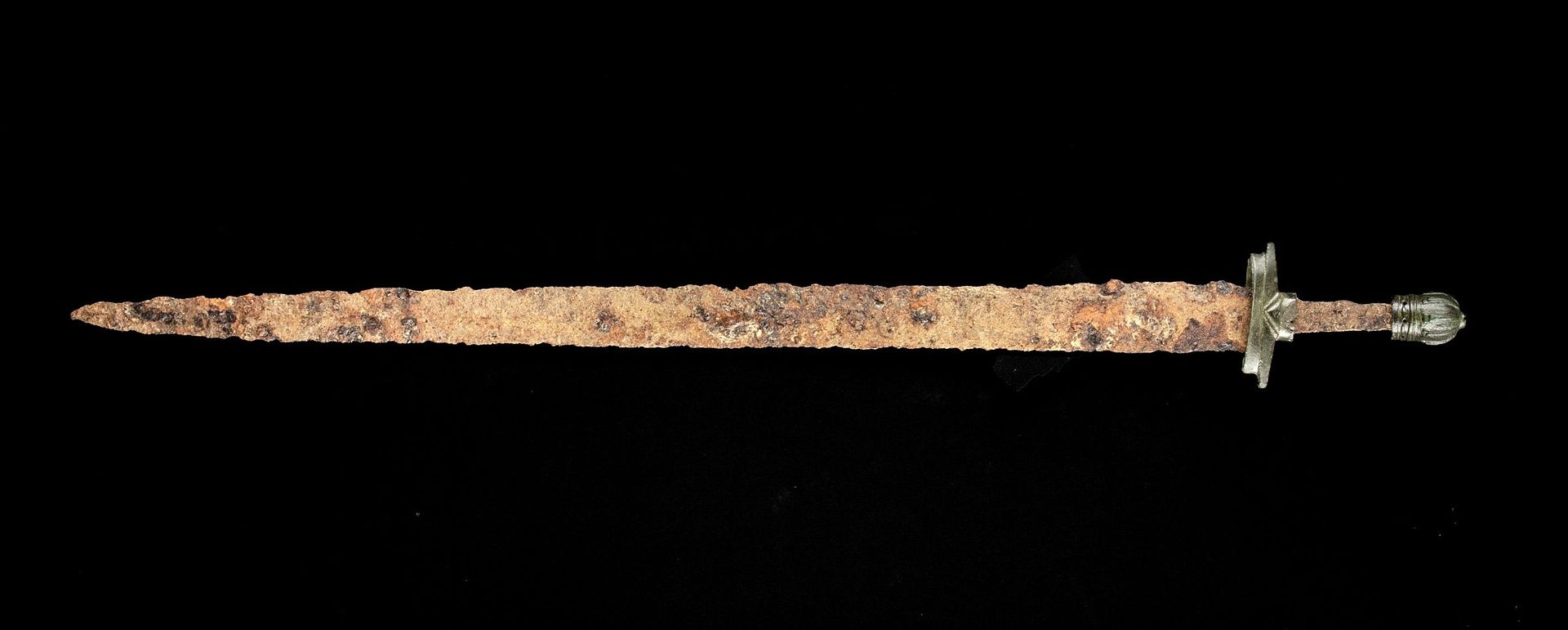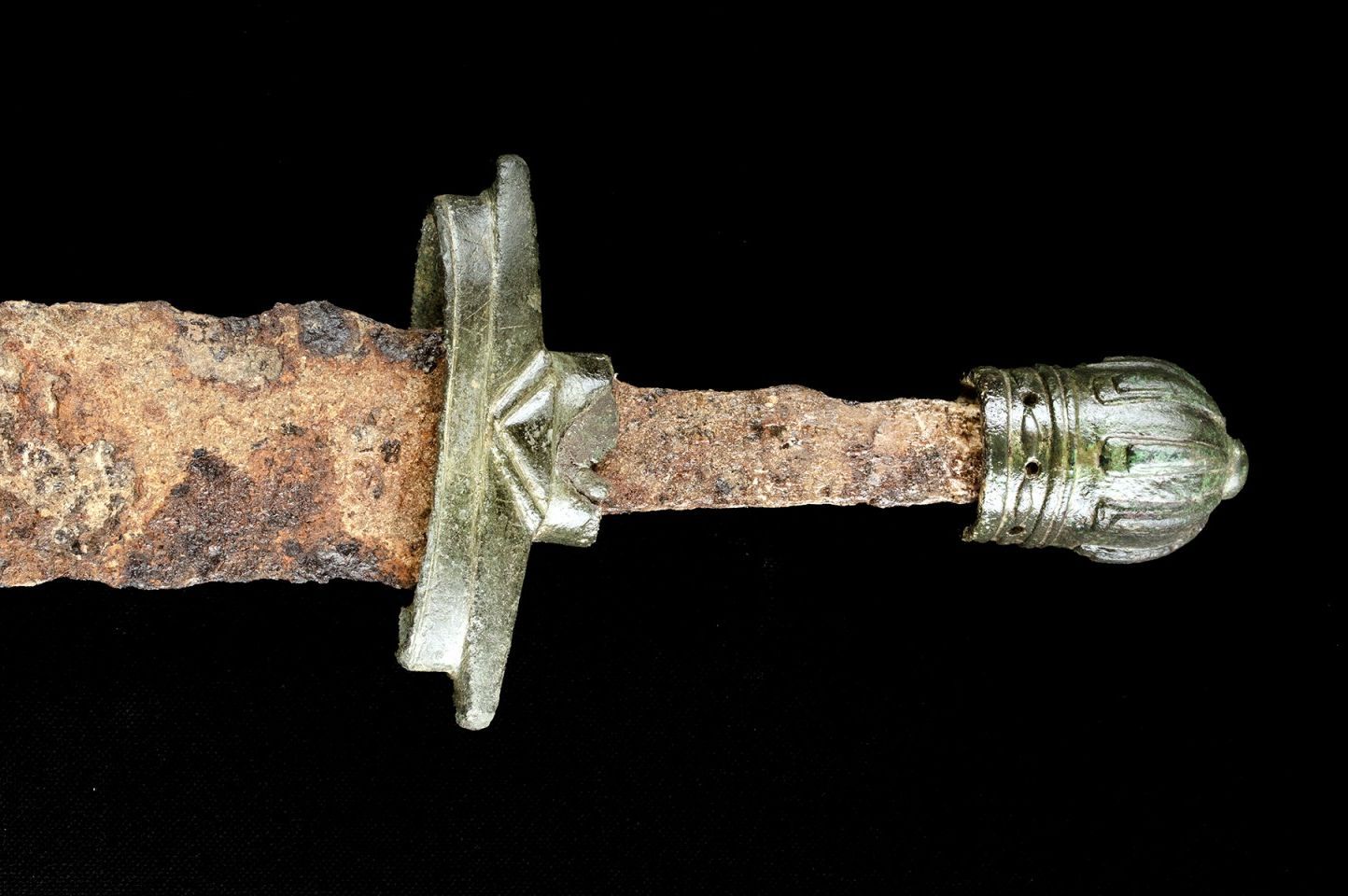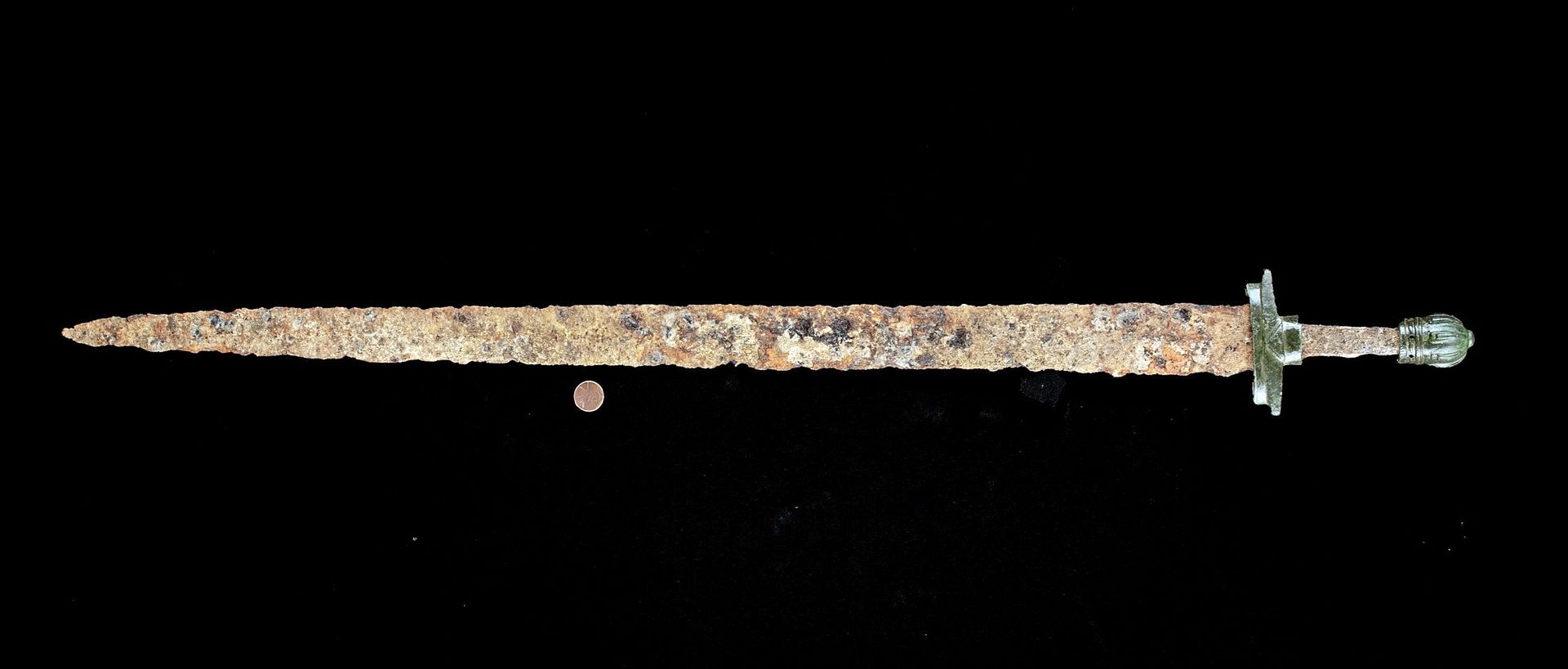Holyland Byzantine Iron / Bronze Spatha Sword
Feb 28, 2020 17:58:14 GMT
Post by Jack Loomes on Feb 28, 2020 17:58:14 GMT



Near East / Holy Land, Byzantine Empire, ca. 7th to 10th century CE. A handsome, large, iron-bladed sword, known as a spatha. The spatha was originally used in the early Roman Empire, inspired by the Celtic longsword, but this example is clearly Byzantine by the inclusion of its short bronze cross guard with horizontal arms and a cylindrical collar, as well as its spherical, crown like bronze pommel. This example has a flat blade with a thin profile that tapers to a sharp point. It would have been sharpened on either side.
Size: 3.55" W x 35" H (9 cm x 88.9 cm)
The spatha was used for over a thousand years and in a wide geographic region. Fascinatingly many of our historical depictions of this style of sword during the Byzantine era come from religious paintings - for example, icons depicting warrior saints bearing swords just like this one. Another is found in "The Illustrations of the Homilies of Gregory of Nazianzus", a surviving manuscript made in Constantinople sometime around the 10th century CE: in the miniature "St. Gregory and Theodosius", high ranking guardsmen known as the protospatharioi stand by the emperor's suite, bearing swords just like this one in scabbards - their straight cross guards are clearly visible.
Condition: The iron has a weathered, pitted surface commensurate with age, with some losses along peripheries. However, the form is very well preserved. A very thin coating of plastic has been applied to the iron surface to protect it and prevent further deterioration. The guard is loose. Both bronze components have rich, dark green patinas and are well preserved.
Source: www.artemisgallery.com/holyland-byzantine-iron-bronze-spatha-sword

.png?width=1920&height=1080&fit=bounds)